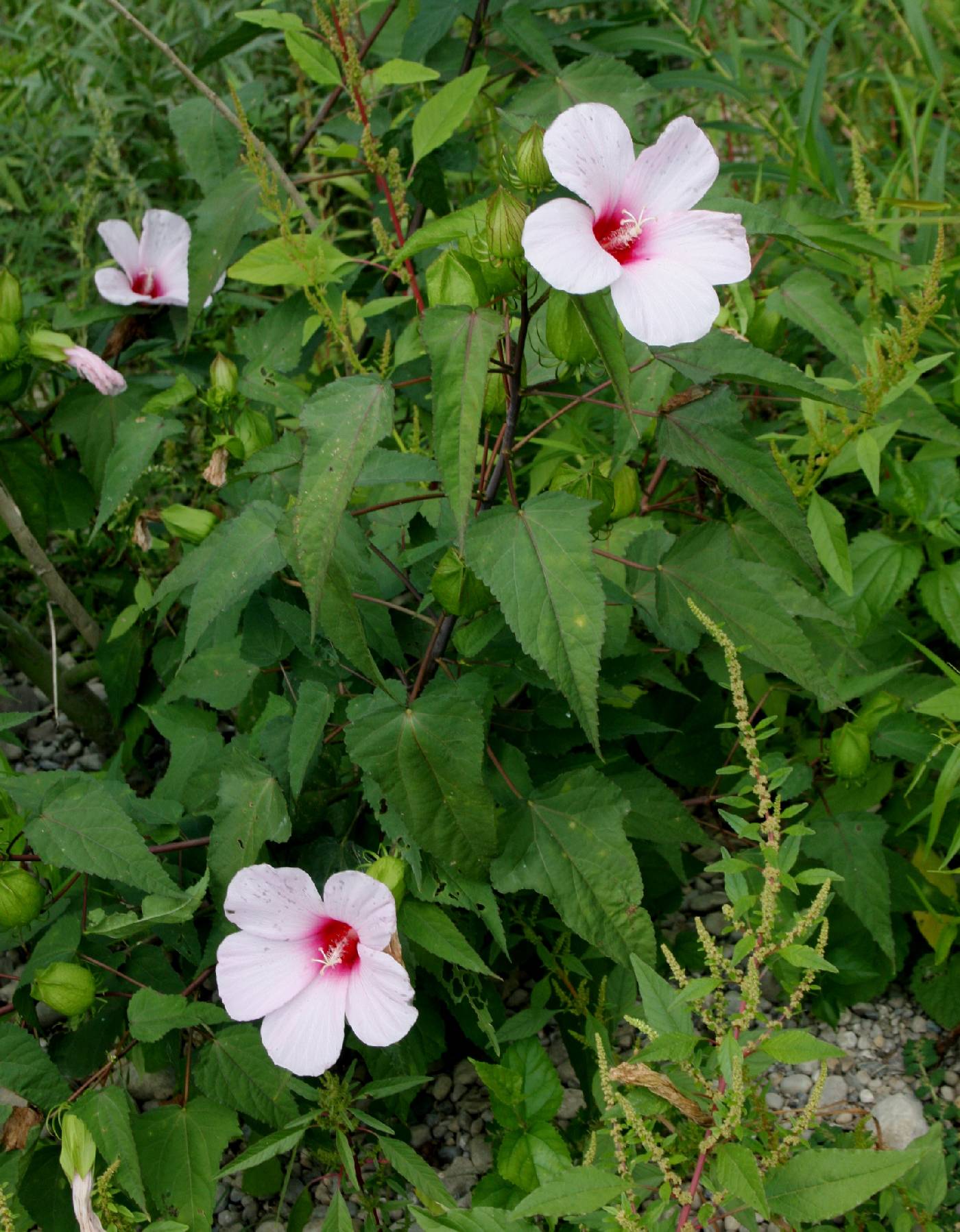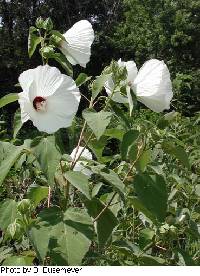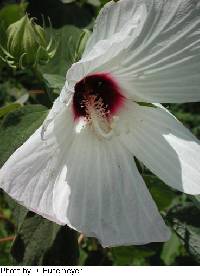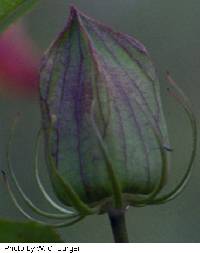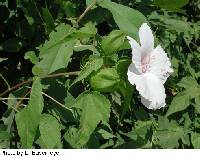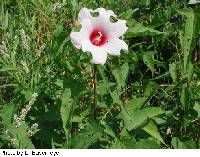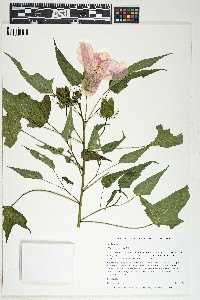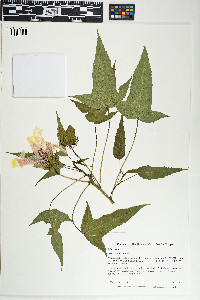Perennial herb 1 - 2 m tall
Stem: single, erect, unbranched, hairless.
Leaves: alternate, stalked, toothed, hairless, triangular in outline with long-tapered pointed tip, and sometimes also with two strongly divergent pointed basal lobes (then considered arrowhead-shaped).
Flowers: axillary, long-stalked, showy, pink with darker center, very large (over 10 cm diameter), funnel-shaped with five flaring petals, and five sepals, which are immediately subtended by at least ten, slender, linear, very long-pointed, hairless bractlets.
Sepals: five, but fused at base, then separating into five, large, egg-shaped lobes, which enlarge in fruit to enclose the capsule. The calyx as a whole is hairless.
Petals: five, pink with darker bases, large (6 - 9 cm long), widest at fairly flat and slightly wavy tips.
Stamens: numerous, but filaments fused into a long tube, with separate anthers all along the tube sides, and five teeth at top of the tube.
Pistil: enclosed by the stamen tube, with one five-chambered superior ovary, five fused styles coming up through center of stamen tube and extending beyond it before branching above into five, obvious, rounded stigmas.
Fruit: stalked, five-chambered, many-seeded, hairless, fairly round capsules enclosed by the persistent and enlarged sepals. Each capsule chamber contains several, round, hairy seeds, which are released as the top of the capsule opens outward and lengthwise downward.
Similar species: Hibiscus laevis is most similar to H. moscheutos, but that species has an obvious, dense covering of finely branched and star-shaped hairs on the lower leaf surfaces and calyx (sepals). The other large-flowered species that may be considered similar is H. syriacus, but it is a woody branching shrub, and its leaves are more egg-shaped with coarse teeth, and the flowers are much more tightly clustered on short stalks.
Flowering: July to September
Habitat and ecology: Local on muddy shores, islands of rivers and streams, and also in shallow water.
Occurence in the Chicago region: native
Notes: Swink and Wilhelm (1994) indicate they believe this species is becoming more frequent in our region due to increased soil erosion and consequently more mud deposition in our streams from agricultural expansion. This species was long known under the name H. militaris.
Author: The Field Museum

